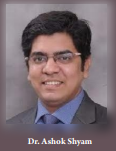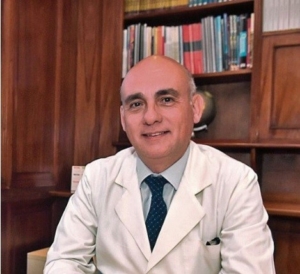Shock Waves and Radial Pressure Waves: Time to Put a Clear Nomenclature into Practice
Review Article | Volume 1 | Issue 1 | JRS December 2021 | Page 4-8 | Achim M. Loske, Daniel Moya DOI: 10.13107/jrs.2021.v01.i01.005
Author: Achim M. Loske [1], Daniel Moya [2]
[1] Centro de Física Aplicada y Tecnología Avanzada, Universidad Nacional Autónoma de México, Blvd. Juriquilla 3001, Querétaro, Qro., 76230, México.
[2] Department of Orthopaedic, Servicio de Ortopedia y Traumatología, Hospital Británico de Buenos Aires.
Address of Correspondence:
Dr. Daniel Moya, MD
Department of Orthopaedic, Servicio de Ortopedia y Traumatología, Hospital Británico de Buenos Aires.
E-mail: drdanielmoya@yahoo.com.ar
Abstract
Extracorporeal focused shock wave therapy and radial pressure wave therapy are noninvasive approaches with high success rates that hold promise for treating a rapidly increasing number of clinical indications. However, reports, presentations at scientific meetings, and information published by manufacturers reflect confusion in the terminology used. This situation is worrisome because both desired and undesired biological effects depend on the pressure profile and the physical parameters used. Moreover, in many cases, the detailed biological mechanisms involved are yet not fully understood. Only a clear knowledge of the physical concepts can enable comparison among and improvement of treatment protocols and technology. Fortunately, specific definitions and recommendations have been agreed upon by scientific societies promoting international standardization. The main goal of this article is to raise awareness of the importance of having a clear nomenclature worldwide and explain some of the concepts based on the international consensus that has been accepted to date.
Keywords: Shock waves, Radial pressure waves, Physical parameters .
Reference:
- Britannica, the Editors of Encyclopaedia. International System of Units. Encyclopedia Britannica, 30 Jul; 2020. Available from: https://www.britannica.com/science/International-System-of-Units [Last accessed on 2021 May 8].
- Metric Convention of 1875. US Metric Association. Available from: https://usma.org/laws-and-bills/metric-convention-of-1875 [Last accessed on 2021 May 8].
- Delius M, Brendel W. Historical roots of lithotripsy. J Lithotr Stone Dis 1990;2:161-3.
- Chaussy C, Eisenberger F, Forssmann B. Epochs in endourology; extracorporeal shockwave lithotripsy (ESWL): A chronology. J Endourol 2007;21:1249-53.
- Loske AM. Medical and Biomedical Applications of Shock Waves. Cham, Switzerland: Springer International; 2017. p. 19-42.
- Türk C, Knoll T, Petrik A, Sarica K, Skolarikos A, Straub M, et al. Guidelines on Urolithiasis. Arnhem, Netherlands: European Association of Urology; 2015. Available from: https://uroweb.org/wp-content/uploads/22-Urolithiasis_LR_full.pdf [Last accessed on 2021 May 8].
- Graff J, Richter KD, Pastor J. Effect of high energy shock waves on bony tissue. Urol Res 1988;16:252-8.
- Karpmann RR, Magee FP, Gruen TWS, Mobley T. The lithotriptor and its potential use in the revision of total hip arthroplasty. Orthop Rev 1987;16:38-42.
- Valchanou VD, Michailov P. High energy shock waves in the treatment of delayed and nonunion of fractures. Int Orthop 1991;15:181-4.
- Rompe JD, Rumler F, Hopf C, Nafe B, Heine J. Extracorporal shock wave therapy for calcifying tendinitis of the shoulder. Clin Orthop Relat Res 1995;321:196-201.
- Haupt G. Use of extracorporeal shock waves in the treatment of pseudarthrosis, tendinopathy and other orthopedic diseases. J Urol 1997;158:4-11.
- Lohrer H, Gerdesmeyer L, editors. Shock wave therapy in practice. In: Multidisciplinary Medical Applications. Heilbronn: Buchverlag; 2014. p. 50-69.
- Speed C. A systematic review of shockwave therapies in soft tissue conditions: Focusing on the evidence. Br J Sports Med 2014;48:1538-42.
- Mittermayr R, Antonic V, Hartinger J, Kaufmann H, Redl H, Téot L, et al. Extracorporeal shock wave therapy (ESWT) for wound healing: Technology, mechanisms, and clinical efficacy. Wound Repair Regen 2012;20:456-65..
- Moya D, Ramón S, Schaden W, Wang CJ, Guiloff L, Cheng JH. The role of extracorporeal shockwave treatment in musculoskeletal disorders. J Bone Joint Surg Am 2018;100:251-63.
- Auersperg V. DIGEST Guidelines for Extracorporeal Shock Wave Therapy. Physics and Technology of ESWT. Available from: http://www.setoc.es/docs/DIGEST%20guidelines_June%202019_E_A.pdf [Last accessed on 2021 May 8].
- IEC 61846 International Standard Ultrasonics/Pressure Pulse Lithotripters/Characteristics of Fields. Vol. 18. Geneva, Switzerland: International Electrotechnical Commission; 1998.
- Ueberle F, Rad AJ. Ballistic pain therapy devices: Measurement of pressure pulse parameters. Biomed Tech 2012;57:700-3.
- International Society for Medical Shockwave Therapy: Physical principles of ESWT Basic Physical Principles. Available from: https://www.shockwavetherapy.org/about-eswt/physical-principles-of-eswt [Last accessed on 2021 May 8].
- Novak P. Physics: F-SW and R-SW. Shock wave therapy in practice. Basic information on focused and radial shock wave physics. In: Lohrer H, Gerdesmeyer L, editors. Multidisciplinary Medical Applications. Heilbronn: Buchverlag; 2014. p. 28-49.
- Federación Ibero-Latinoamericana de Ondas de Choque e Ingeniería Tisular (Onlat) Ondas de Choque en Medicina: La Nueva Frontera. Available from: https://onlat.net/?page_id=2491 [Last accessed on 2021 May 8].
- European Commission DG Health and Consumer. Medical Devices: Guidance Document. Classification of medical devices. MEDDEV 2. 4/1 Rev. 9 June 2010. Available from: https://pdf4pro.com/download/medical-devices-guidance-document-6fa97.html [Last accessed on 2021 May 8].
- Eid J. ISMST Consensus Statement Terms and Definitions. Available from: https://www.shockwavetherapy.org/fileadmin/user_upload/dokumente/PDFs/Formulare/Consensus_MBRadial_pressure_wave_2017_SS.pdf [Last accessed on 2021 May 8].
- Consenso de la Federación Ibero-Latinoamericana de Ondas de Choque e Ingeniería Tisular Sobre las Bases Físicas de las Ondas de Choque Focales y de las Ondas de Presión Radial. Available from: https://onlat.net/?page_id=2497 [Last accessed on 2021 May 8].
- Consensus Statement on ESWT Indications and Contraindications. Available from: https://www.shockwavetherapy.org/fileadmin/user_upload/dokumente/PDFs/Formulare/ISMST_consensus_statement_on_indications_and_contraindications_20161012_final.pdf [Last accessed on 2021 May 8].
- Recommendation Statement of the Conjoint Physics Working Group of ISMST and DIGEST on ESWT study design and publication. ISMST Recommendations. Available from: https://www.shockwavetherapy.org/about-eswt/ismst-recommendations [Last accessed on 2021 May 8].
- Ramon S, Español A, Yebra M, Morillas JM, Unzurrunzaga R, Freitag K, et al. Ondas de choque. Evidencias y recomendaciones SETOC (Sociedad Española de Tratamientos con Ondas de Choque). Rehabilitación (Madr) 2021;55:291-300.
- Sociedade Médica Brasileira de Tratamento por Ondas de Choque. Physical Features. Available from: https://www.sbtoc.org.br/aspectos-fisicos [Last accessed on 2021 May 8].
- Deutschsprachige Internationale Gesellschaft für Extrakorporale Stoßwellentherapie: Technology, Technical Differences. Available from: https://www.digest-ev.de/gesellschaft/geschichte.html [Last accessed on 2021 May 8].

| How to Cite this article: Loske AM, Moya D | Shock waves and radial pressure waves: time to put a clear nomenclature into practice. | Journal of Regenerative Science | December 2021; 1(1): 4-8. |



